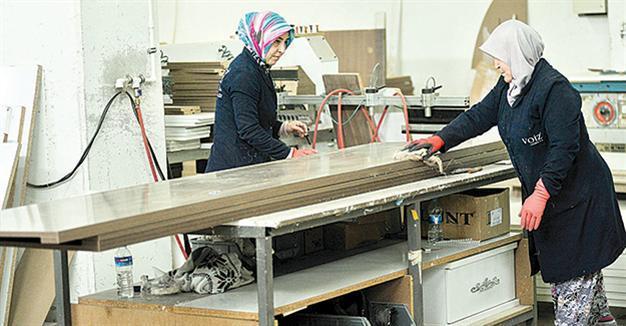ILO: Large gender gaps remain across broad spectrum of global labor market
GENEVA

AA Photo
New report from the International Labor Organization has highlighted the enormous challenges women continue to face in finding and keeping decent jobs around the world, noting that the difference in the employment rate between men and women had decreased only by 0.6 percent since 1995.“The report shows the enormous challenges women continue to face in finding and keeping decent jobs,” said ILO Director-General Guy Ryder in a written statement at the UN agency’s website on March 7 to mark the March 8 International Working Women’s Day.
“Our actions must be immediate, effective and far-reaching. There is no time to waste. The 2030 Agenda is an opportunity to pool our efforts and develop coherent, mutually supporting policies for gender equality,” he noted.
The report, Women at Work: Trends 2016, examined data for up to 178 countries and concludes that inequality between women and men persists across a wide spectrum of the global labor market. What’s more, the report showed that over the last two decades, significant progress made by women in education has not translated into comparable improvements in their position at work.
At the global level, the employment gender gap has closed by only 0.6 percentage points since 1995, with an employment-to-population ratio of 46 percent for women and almost 72 percent for men in 2015.
In 2015, 586 million women were working as own-account and contributing family workers across the world. As globally, the share of those who work in a family enterprise (contributing family workers) has decreased significantly among women (by 17 percentage points over the last 20 years) and to a lesser extent among men (by 8.1 percentage points), the global gender gap in contributing family work is reduced to 11 percentage points.
“Although 52.1 percent of women and 51.2 percent of men in the labor market are wage and salaried workers, this in itself constitutes no guarantee of higher job quality. Globally, 38 percent of women and 36 percent of men in wage employment do not contribute to social protection. The proportions for women reach 63.2 percent in sub-Saharan Africa and 74.2 percent in Southern Asia where informal employment is the dominant form of employment,” said the report.
The report provided new data for up to 100 countries on paid and unpaid working hours and access to maternity protection and pensions.
Women work longer hours
Women continue to work longer hours per day than men in both paid and unpaid work, added the ILO.
“In both high and lower income countries, on average, women carry out at least two and a half times more unpaid household and care work than men. In developed economies, employed women (either in self-employment or wage and salaried employment) work 8 hours and 9 minutes in paid and unpaid work, compared to 7 hours and 36 minutes worked by men,” according to the report.
In developing economies, women in employment spend 9 hours and 20 minutes in paid and unpaid work, whereas men spend 8 hours and 7 minutes in such work. The unbalanced share of unpaid work limits women’s capacity to increase their hours in paid, formal and wage and salaried work.
“As a result, across the world, women, who represent less than 40 per cent of total employment, make up 57 per cent of those working shorter hours and on a part-time basis,” said the report.
In addition, across more than 100 countries surveyed, more than one third of employed men (35.5 percent) and more than one fourth of employed women (25.7 percent) work more than 48 hours a week. This also affects the unequal distribution of unpaid household and care work between women and men, said the ILO.
There has also been further segregation in the distribution of women and men across and within occupations, over the past two decades, as skill-biased technological work increases, notably in developed and emerging countries.
“Between 1995 and 2015, employment increased most rapidly in emerging economies; the absolute change in employment levels was twice as high for men as for women (382 million versus 191 million respectively), regardless of the level of skills required, indicating that progress in getting women into more and quality jobs is stagnating,” said the report.
In developed countries, women spend on average 4 hours and 20 minutes on unpaid care work per day, compared to 2 hours and 16 minutes by men. In developing countries, women spend 4 hours and 30 minutes per day on unpaid care work, compared to 1 hour 20 minutes for men.
“Although this gender gap remains substantial, it has decreased in a number of countries, mostly due to the reduction in time spent on housework by women, but not to significant reductions in their time spent on childcare,” said the report.
In terms of wages, the results in the report confirm previous ILO estimates that globally, women still earn on average 77 percent of what men earn.
















